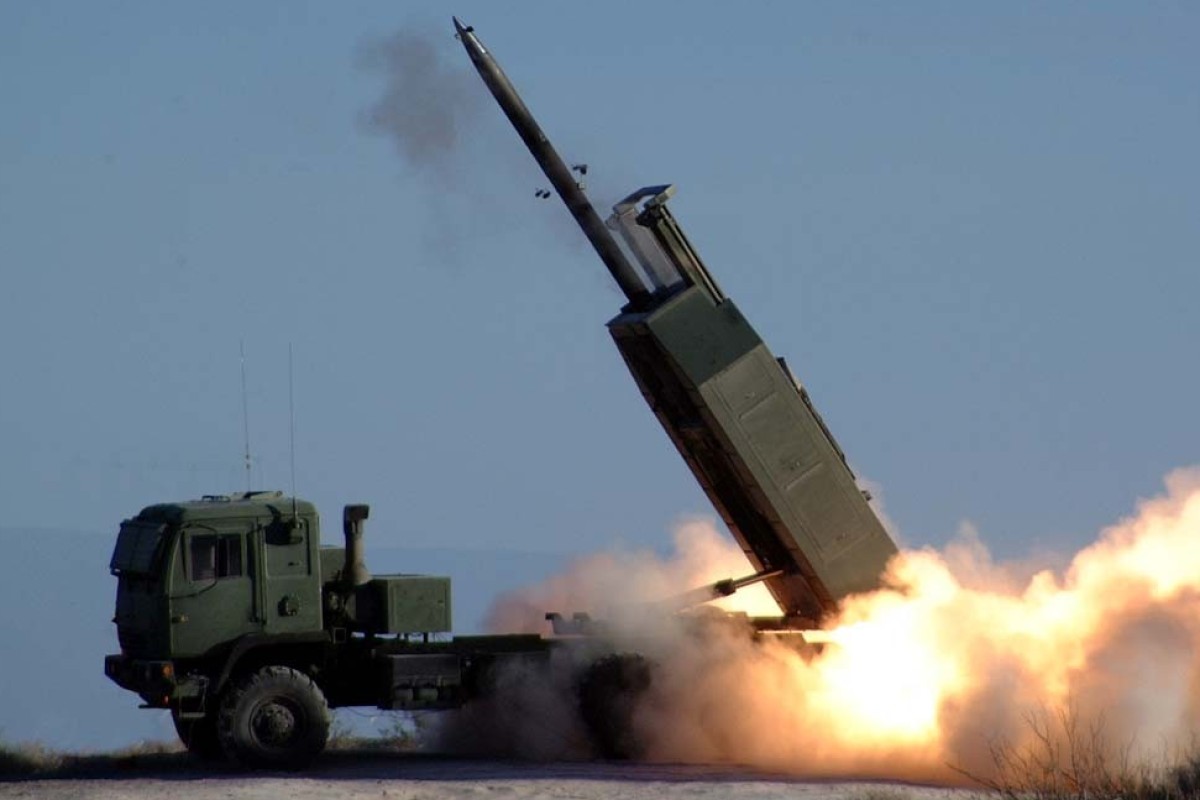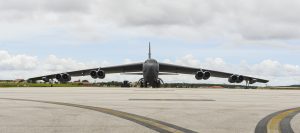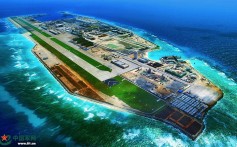The story of Palau and its place in US military strategy
Esper’s call for additional basing is necessary based on U.S. interests, lack of current basing options, and China’s assertiveness. The recent Chinese Defense White Paper highlights China’s increasingly aggressive rhetoric, which is matched by actions in the South China Sea (SCS) and around Taiwan. These actions threaten American interests in the region, including freedom of navigation and the military geography of the U.S. position in the Pacific. Ultimately, U.S and allied military power in the region is the guarantor of the fair trade upon which the United States depends. Unfortunately, the United States has limited air bases in the region from which to project power. On the Asian mainland, the United States has only two air bases in South Korea, both of which are focused on preparing for and deterring war with North Korea. Beyond the mainland, the United States maintains air bases in Japan, but only Kadena Air Base in Okinawa is positioned to secure U.S. interests in the East China Sea (ECS) or SCS. The United States also maintains a base on Guam; however, the concentration of forces there make it a prime target for enemy operations. To help safeguard U.S. interests and to check China, the United States needs to establish a more robust base network in the region.
The United States should develop an integrated base network using a hub and spoke model. A hub and spoke base network includes a main operating base (MOB) and collocated operating bases (COBs). This is not a new idea; the U.S. Air Force used a similar model to ensure survivability during the Cold War. The Cold War model was designed for continental use but could be adapted to the Pacific. In the original model, the MOB, or hub, was where the Air Force had forces permanently stationed. The spokes — COBs — were bare bones facilities. During peacetime the majority of forces would be based at the hubs; however, indications of war would trigger dispersal to the spokes. A 1986 RAND report identifies the required and desired facilities for COBs, summarized in Table 1.
Additionally, the MOB/hub, should include significant logistics capabilities including a port, or excellent over-land connection to a port, to enable sustainment. The spokes/COBs should be bare-bones facilities which can be sustained via air or more limited surface transportation. Additionally, hubs and spokes should be mutually supporting both in terms of defensive capabilities and in their ability to handle aircraft. In terms of ability to handle aircraft, for bases to support fighters they need 8,000 feet of useable runway, while bombers and key elements U.S. ISR capabilities require 10,000 feet of runway. Finally, this model can help balance tradeoffs in other areas like security. For example, a hub could be in a more populated area to ease logistics and personnel requirements, while the bulk of the combat power might be dispersed to more remote spokes.
Given the increasing range of conventional fires, it’s unlikely that U.S. bases in the Pacific will be able to exist outside the effective range of PRC fires. That being said, hubs and spokes would complicate China’s ability to target U.S. bases. It would force the PLA to monitor more locations and to divide their forces between multiple locations. Placing the bases outside the range of the majority of PRC fires assets would further force them to divide their limited number of long-range ISR and fires assets. The most recent Department of Defense estimate provided to Congress states that the PRC has 570 ground-based launchers for short, medium, intermediate, and intercontinental ballistic missiles (SRBM, MRBM, IRBM, ICBM). However, only 80 of those, the DF-26 IRBM, would be used to target Guam, the other Marianas Islands or Palau. The remainder of the PRC’s missiles either can’t reach those targets (i.e. SRBMs and MRBMs), or are nuclear forces (i.e. ICBMs) and would be reserved for nuclear attacks (which brings up scenarios that are outside the scope of this piece). The Philippines have locations, including Clark and Subic Bay in Northern Luzon, that are within the range of some of China’s SRBMs and other areas that China could only reach with IRBMs.
The Philippines appear to offer the ideal location for U.S. bases, but it is currently politically unfeasible given President Rodrigo Duterte’s eagerness to partner with China instead of the United States. That being said, the U.S. should eye the Philippines for basing options after 2022, when the Philippines should inaugurate a new president. The Philippines has a number of excellent ports including Subic Bay, which has been a hub for U.S. operations in the past. In addition to Subic, Clark Air Base has supported U.S. air operations in the past. Beyond Clark, the Philippines has a network of established airbases that the U.S. could potentially use to enhance resiliency and complicate Chinese targeting.
However, there are some important issues associated with potential basing in the Philippines. First, the island of Luzon’s proximity to key areas – the SCS and Taiwan – is both a blessing and a curse. Luzon’s geographic location is a blessing because it means that it would be easier for aircraft to get to the potential fight, but also a curse because airbases there would be vulnerable to a greater number of Chinese ballistic missiles. Similarly, there may be a measure of security for U.S. forces operating from Luzon; the PRC may be hesitant to widen a conflict in the SCS or with Taiwan by drawing in the Philippines. However, such diplomacy is a double-edged sword; the Philippines, in an effort to avoid being drawn into a conflict with China, may prohibit the U.S. from launching combat or support missions from airbases in the Philippines similar to what Turkey did during the 2003 invasion of Iraq.Moving east from the Philippines is Palau, which has three options for U.S. bases: Koror, Peleliu, and Angaur. Koror has a port and a functioning airfield. Its airfield has a 7,200-foot runway, which makes it suitable for transport aircraft but limits its utility for fighters. Additionally, extending Koror’s airfield would require construction on the one runway servicing the islands, which would interrupt commercial traffic. Koror’s airfield has security challenges as well. It is a civil airfield and the island is a scuba diving hotspot — so it has a slew of resorts. Koror would, however, be potentially suitable as a hub for operations originating in Palau.
South of Koror are Peleliu and Angaur Islands. Peleliu has a 6,000-foot long, 40-foot wide runway that is overgrown and currently unusable. Angaur’s runway, at 7,000-feet by 150-feet, is closer in size to what would be required for combat operations. Adding 1,000 to 2,000-feet to support fighter operations, or up to 4,000-feet to support bomber and ISR operations to these runways is possible, even if it requires operations to extend them into what is now the sea. Developing Peleliu and Angaur should be politically feasible given recent statements by Palau’s president requesting modernization of these airfields. Additionally, there should be some ability to engage in burden sharing with Palau, including options to use Palau’s police force as security for U.S. forces. Peleliu and Angaur are far less visited than Koror, making them easier to secure and thus more suitable for military operations. Both islands have limited facilities, but the United States could use Koror for personnel and administrative functions while establishing bare-bones facilities at Peleliu or Angaur. U.S. forces in Palau would lack mutual support with those operating in Guam or the Marianas, but they would also force even greater complexity on Chinese targeting. That being said, if the United States were to establish multiple bases in Palau, those bases would enjoy mutual support with one another.
The U.S. should also develop airfields on its own territory in the Marianas including those on Guam, Saipan and Tinian. Guam has an excellent port, a naval base and a major Air Force Base. Andersen AFB would be an excellent hub, but right now it is without spokes. Potential spokes include airfields on Guam or in the Northern Marianas Islands.
Orote Field, located on the Navy Base Guam, has a 4,000-foot defunct runway, which could be lengthened and improved. Additionally, being on a navy base gives Orote a measure of security and logistical supportability. However, Orote is limited in its ability to complicate the PRC’s targeting, since Guam is already a likely point of interest for the PRC.
The Northern Marianas Islands (NMI) have two international airports. Tinian and Saipan both have functioning runways exceeding 8,000-feet and are between 120 and 140-miles respectively from Andersen AFB. Both islands also have defunct airfields that could be returned to service to provide a more secure location for military operations, though at higher cost than converting the international airports to dual use facilities. Tinian and Saipan could serve as spokes for the Guamanian hub, and forces in NMI would share a measure of mutual support with forces on Guam. Aircraft based at Guam could reasonably use NMI fields as divert fields. Additionally, Patriot Missile sites on Tinian or Saipan would likely overlap in coverage with those on Guam, forcing China to target multiple mutually supporting bases.
Of course, just because the United States can develop bases in the Philippines, Palau, or Marianas, doesn’t mean it should. Furthermore, additional bases should not just complicate Chinese targeting but they should also improve the United States’ geostrategic position and provide the U.S. with strategic options. Developing additional bases in Palau, the Marianas and eventually the Philippines will help the U.S. ensure the survivability of combat power in the Philippine Sea, enable force projection from the Philippine Sea, and provide multiple lines of operation converging on strategic terrain. Fighter aircraft operating from Palau or the Marianas will be operating at extreme ranges to directly support U.S. operations in support of Taiwan, the SCS or ECS. However, aircraft from Palau or the Marianas could support Navy assets operating in and from the Philippine Sea. For example, USAF fighters could provide fleet defense for a carrier-based force operating in the Philippine Sea, which would free up carrier-based fighters for offensive missions. In some respects this is similar to the concept developed in World War II of having multiple carriers operating together with one as the duty carrier and the other as a strike carrier. Of course, aircraft with longer ranges would be able to carry out independent missions as well.
Bases in Palau and the Marianas would allow the United States to ensure secure lines of communication from the Philippine Sea to key American interests in Taiwan and Okinawa. Additionally, in the event that the Philippines strengthen ties with the PRC, bases in Palau can serve to defend America’s western flank including the lines of communication between the Marianas and Okinawa and Taiwan. If the Philippines returns to the American camp, bases in Palau can help ensure lines of communication to the Philippines. With secure lines of communication, the U.S. could establish base networks in the Philippines to project power into the SCS and toward Taiwan and can look to establish additional basing options around the SCS.








